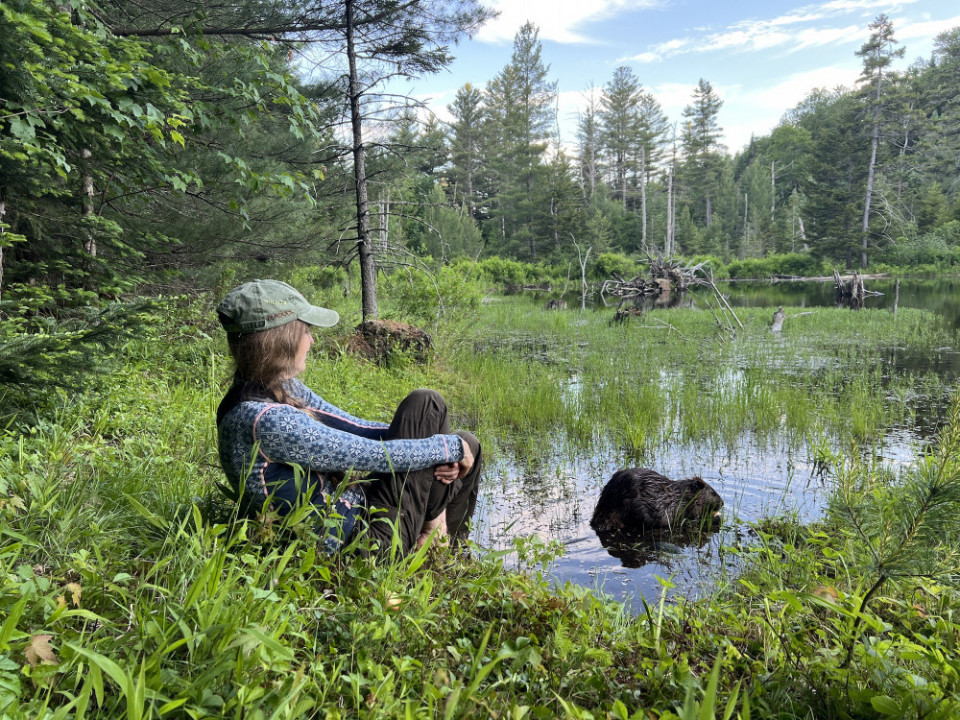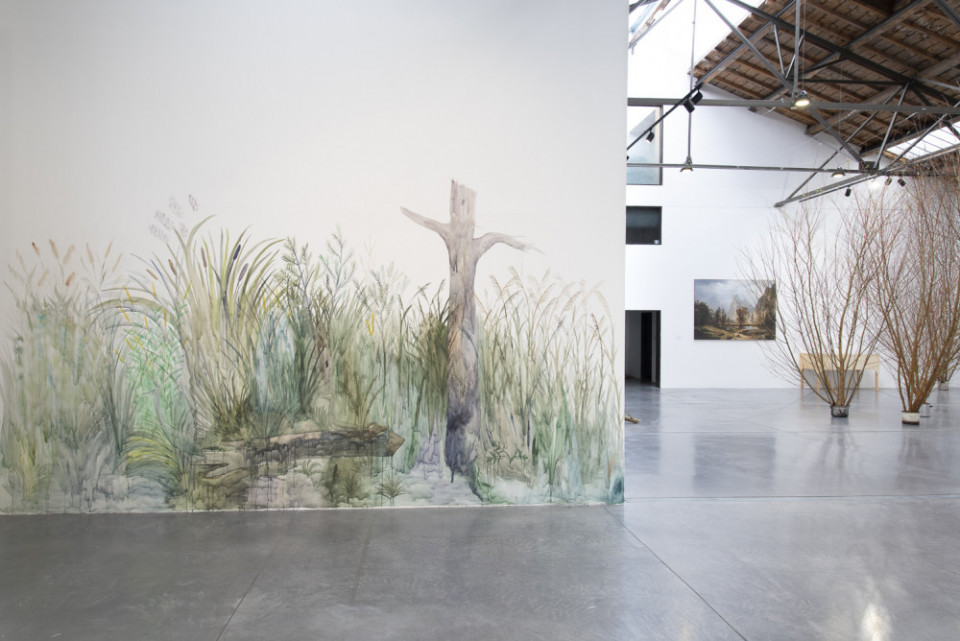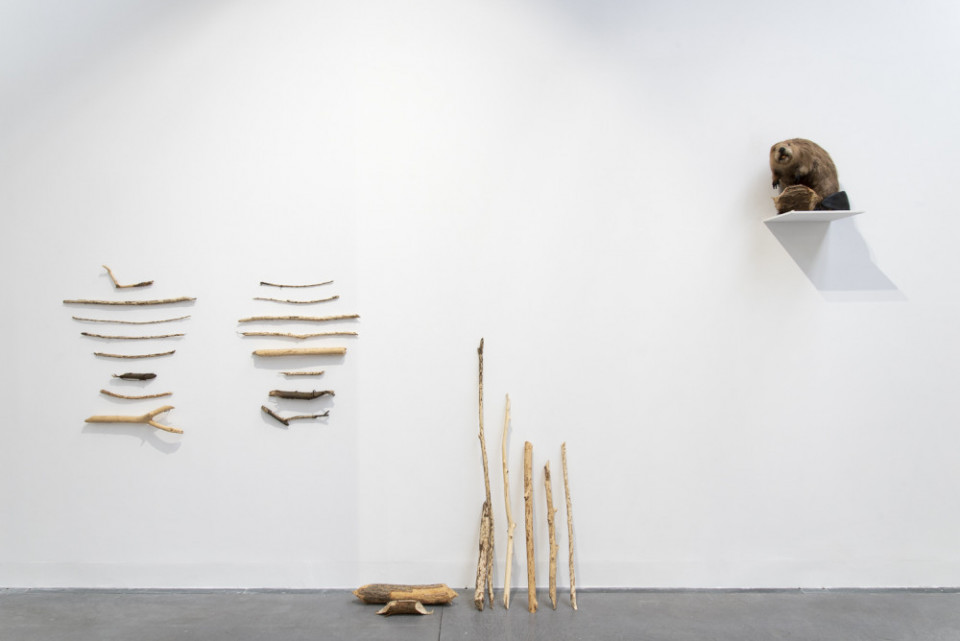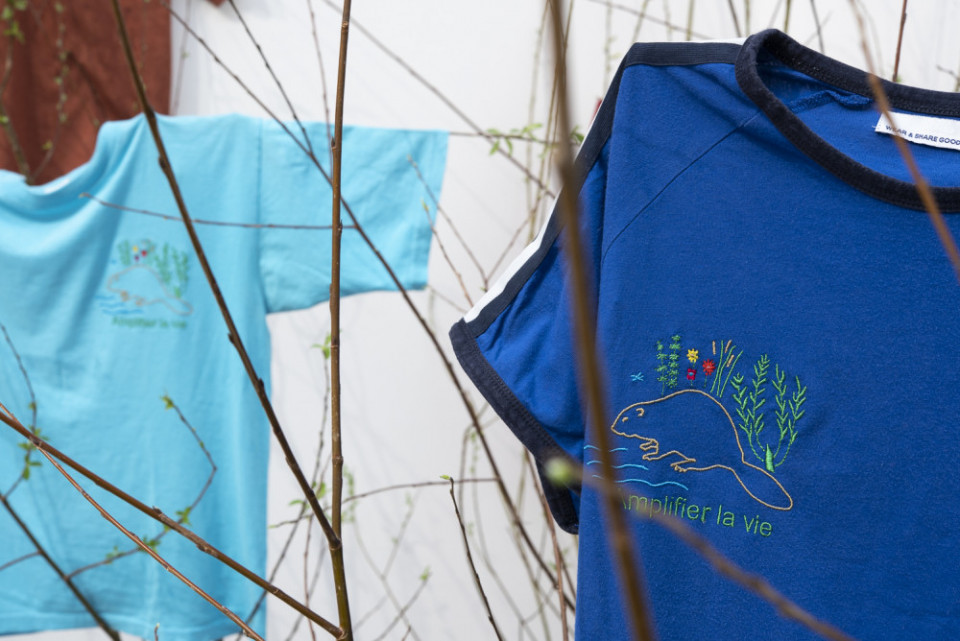Suzanne Husky
La Parabole du Bièvre
Exposition
“I am writing all this down in blue ink, so as to remember that all words, not just some, are written in water.” Maggie Nelson, Bluets, Jonathan Cape (Penguin Random House), 2017.
The exhibitions La Parabole du Bièvre by Suzanne Husky and Pas de cerise sans noyau by Ju Hyun Lee bring together artists’researches connected to the specific relationship between certain living beings and their environment. Although their subjects may appear to be very different (a wild species in Suzanne Husky’s work, agricultural know-how in Ju Hyun Lee’s), the two exhibitions respond to each other. Each is the product of intuitive, poetic and documented observations of the ecosystems of territories that have been disrupted by human action. They present art pieces that work to link(1) and transcribe the experiences of the communities (producers, farmers, activists, researchers, artists) they have called on.
These communities, like the exhibitions, give rise to “collective experimentation that builds [collective] power and produces change(2)”. […]
Suzanne Husky is developing an artistic practice questioning the forms of domination over the “living”. She sees her work as a possible propaganda tool, putting forward alternative proposals for “working with” the earth, learning from it and restoring our environments. Her work can take the form of a regenerated soil, a forest garden, a fictional institution (Le Nouveau Ministère de l’Agriculture with Stéphanie Sagot), or an inventory of the knowledge about planet Earth found in fairy tales. Trained in landscape gardening and agro-ecology, she is aware of the urgent need to revise our representations of nature and the place of human beings within it at a time when “everything is burning”. It was while exploring the links between folklore, crafts and rituals that she had her decisive encounter with the “beaver”.
The Parable of the beaver(3) is an intimate reflection on the need to rethink our coexistence with the hydrological animal, to reform our knowledge and value systems, and to decolonise our relationship with the wild. More concretely, the exhibition focuses on the pressing issues surrounding the health of rivers and wetlands in relation to current climate problems. Based on the premise(4) that the beaver has millions of years’experience of rehydrating the landscape, the exhibition brings together a number of works in different media (watercolor, video, logotype) and objects (plant installation, collection of traces) that serve the artist’s campaign. These are inspired by Suzanne Husky’s encounters as she travelled through the immense place that the beaver occupied in our imagination and our landscapes before being erased … and then painstakingly reintroduced.
A parable is a short allegorical story based on the principle of comparison, which may borrow elements from everyday life to illustrate a lesson or a moral. Here, the lessons of the beaver take us down the path of ecofeminist archaeology. They invite us to re-read the history of the marshes through the reintroduction of this non-human forgotten by the discipline. They also look at the scientific methods used to restore rivers and wetlands in the Pacific Northwest of the United States, inspired by the formidable dams built with a view to bringing back the beaver. At the end, they lead us into the life stories of a singular naturalist close to these people, immersed in their seasonal rhythm, rediscovering the marsh in its original state, far removed from the manufactured negative perception that still condemns our wetlands today.
Adeline Lépine
1-The “Work that reconnects” is a methodology aimed at deepening our connection to the living and to the Earth in order to prepare ourselves for collapse and recovery. It was developed in the mid-1980s by the American environmental activist, author and psychologist Joanna Macy, who is known for her involvement in the conceptualisation of ecopsychology.
2- Extract from a Starhawk’s essay quoted by Émilie Hache in a demonstration bringing together political action and magic in Eau et féminismes, petite histoire croisée de la
domination des femmes et de la nature, collective work coordinated by Lia Marcondes, éditions La dispute, collection Tout autour de l'eau, Paris, 2011, p.130.
3- The title of the exhibition is a reference to two books by the American author Octavia E. Butler (1947-2006): Parable of the Sower (1993) and Parable of the Talents (1998). The first is set in Los Angeles 2024. Global warming has led to drought and rising sea levels. Fresh water is scarce, as precious as money. Fires are frequent. Those who can survive live in fortified enclaves from which the homeless are pushed out. The heroine, Lauren Oya Olamina, prepares to survive the future by delving into the ancestral plant knowledge of the Amerindians. The sequel, which begins in 2032, features Lauren’s daughter in a world of violence driven by a new presidential candidate who wants to “make America great again”….
Bièvre (in the French title of the exhibition) is an old French word for contemporary word “castor”. It has the same etymological root than “beaver”.
4- Confirmed by the IPCC (Intergovernmental Panel on Climate Change) report of 2022, which advocates collaboration with beavers as one of the solutions to global warming. Beavers create ecosystems that regulate pollution, restore riparian zones and increase vegetation and biodiversity. In this way, they help to reduce the extent of deadly floods, support summer low-water levels and reduce the risk of wildfire. https://www.sauvonsleau.fr/jcms/e_27984/castor-un-plan-d-action-nord-americain-pour-le-climat-en-eau-douce
Infos utiles
Artist's website
Download the press kit
Télécharger le cahier des expositions
Suzanne Husky’s exhibition is co-produced with the CAP in Saint-Fons and the Veduta programme of the Biennale de Lyon. It includes objects from the heritage collections




